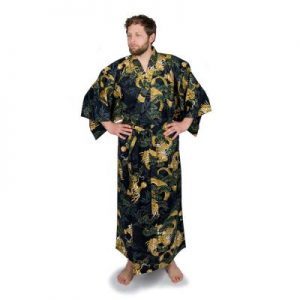Japanese clothing has always been the epitome of rich culture and tradition. The yukata and kimono are two pieces of clothing that are a perfect example of the Japanese way of life. While the two might seem similar, they are, in fact, quite different in terms of history, style, and material. The yukata is a lightweight and breathable summer robe. The kimono is traditionally a formal attire worn on special occasions. In this blog post, we will delve into the differences between the yukata and kimono and discover what makes each piece unique.
The Yukata
The yukata is famously known as a summer robe. It is made from light cotton fabric that allows air to circulate, keeping the wearer cool in the sweltering Japanese summer. Yukata robes are available in a variety of colors, patterns, and styles. Bold patterns are a favorite among younger generations. It is often worn to summer festivals or onsen (hot springs) excursions. Women usually wear a colorful belt called an obi, while men wear a simpler and narrower sash known as a koshihimo.
The Kimono
The kimono, on the other hand, is a long formal robe that drapes down to the ankles. This traditional robe is made from cotton or silk and adorned with floral patterns. It is usually often worn at special occasions such as weddings and funerals. The pattern and color of the kimono can convey information such as the rank, occupation, and marital status of the wearer. To complete the attire, women wear a padded cloth on their waist called an obi while men wear a hakama, a skirt-type pleated pants.
Fabrics and Design
Yukata robes are made from breathable, lightweight cotton material. This makes them an ideal outfit for hot, humid weather. The kimono, on the other hand, is made from silk or heavier cotton. Its patterns are more elaborate and intricate. The designs on a kimono are often linked to a specific occasion or event. They can depict seasons, such as cherry blossoms in the spring or snowflakes in the winter. It is not uncommon to see yukata worn with bold patterns in pink, purple, and blue. The colors of a kimono are more muted, consisting mainly of black, white, and soft pastels.
Styles
Yukata robes generally have a more relaxed fit than kimono robes. They are also shorter, measuring around the ankle. On the other hand, most kimono robes are longer, with some measuring up to 72 inches in length. Additionally, the sleeves of a kimono are typically wider and longer than those of a yukata. The traditional Japanese kimono that is worn on formal occasions has long and flowing sleeves, called furisode.
In conclusion, the yukata and kimono are two unique and revered pieces of Japanese clothing. The yukata is perfect for summer festivals and casual outings. While the kimono is worn for special occasions that require formal attire. While the two garments may share some similarities in terms of style, pattern, and color, they are fundamentally different in terms of material, design, and significance. Understanding the differences between the yukata and kimono can help you appreciate Japanese culture and style even more.
If you are looking to purchase kimono or yukata, shop one of the oldest and largest Kimono Shops in the USA. Their online shop offers the ease of shopping at home and the service of a US-based, employee-owned company that prides itself on great service and competitive pricing.
Tags: Kimono Shop, kimono yukata, men's yukata robe, Women's kimono








